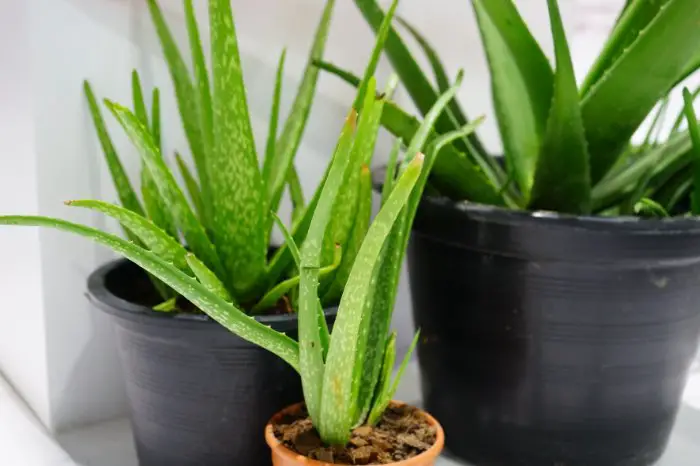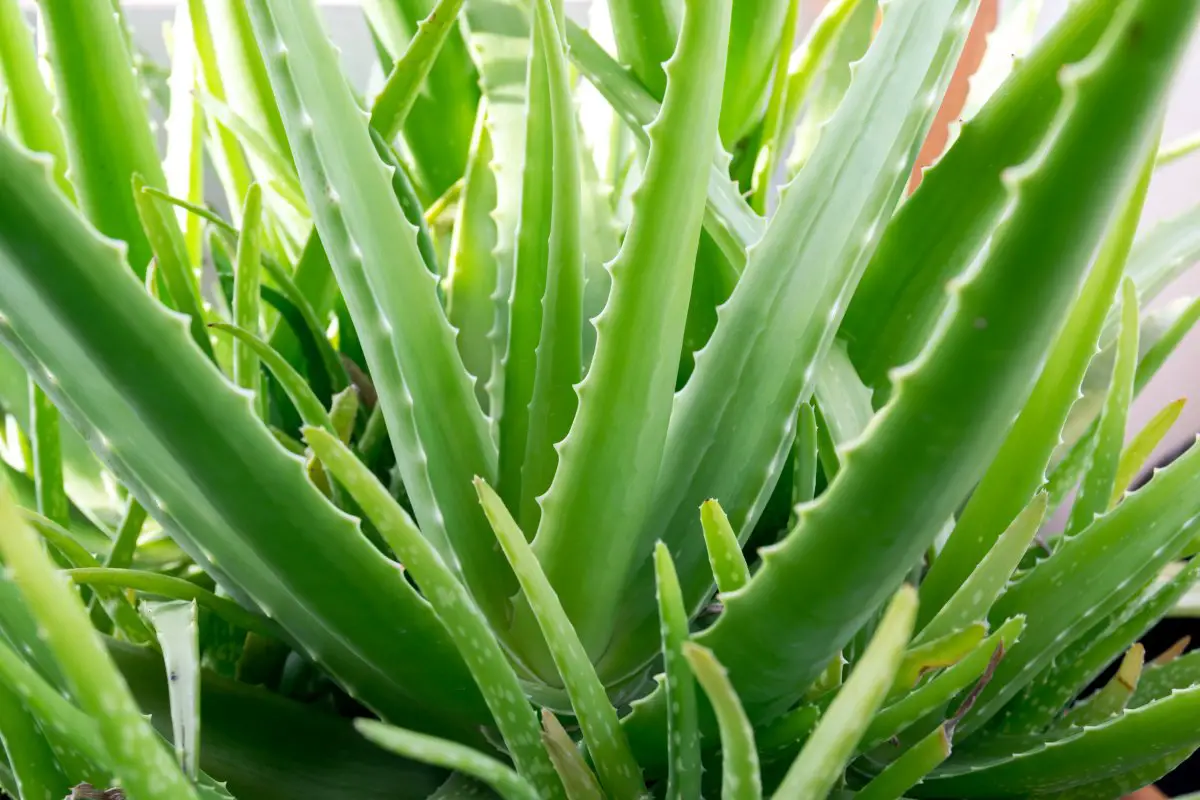Last Updated on November 28, 2022 by Cristina
When starting to care for this plant, you need to ask yourself: does aloe vera need full sun? Whether growing them indoors or out – they can be quite picky!
Aloe veras are a favorite amongst beginner gardeners. Although they’re not that hard to keep alive, balancing their sunlight needs can be tricky. Too much or too little sun will do them harm. You need to get the perfect spot and not move them!
In this article, I share whether aloe veras grow better in the sun or shade. You’ll also read about their survival without sunlight and tips to help you get yours big.
Does Aloe Vera Grow Better In The Sun Or In The Shade?
Aloe veras grow better in the sun than they do in the shade. They’re part of the succulent family that thrives in the desert. Since they’re also semi-tropical, they’ll do well in warm, tropical areas.
These plants need bright sunlight, but it shouldn’t shine directly onto them. Direct sunlight can give your aloe veras sunburn. The leaves will start to dry out and turn brown or yellow.
You can water your aloe vera more frequently to prevent this from happening. However, you wouldn’t want to stand around with your watering can all day. Indirect sunlight at a south-facing window or artificial grow lights should do the trick.
The only shaded area that’s suited for aloe veras is one in a scorching climate. The climate should be hot enough to supplement the sunlight they’re missing. You can try to grow your aloe veras in bright-shaded or partly-shaded spots. The best area is one that gets sunlight for a few hours daily.
If your aloe veras show signs that their circumstances aren’t working, move them to a different spot.
You Might Want to Read these Related Articles:
Can Aloe Vera Survive Without Direct Sunlight?
Despite being succulents and thriving in desert-like conditions, aloe veras can survive without direct sunlight. There are rare instances when aloe veras can survive without sunshine.
You can grow them in your office with some artificial grow lights if there’s no sunlight available. Warm climates, often present in humid tropical rainforests, provide enough heat for them to survive in shaded areas.
Although aloe veras grow better in the sun than in the shade, they need indirect sunlight to be in their healthiest condition. Scorching direct sunlight can burn their leaves, leaving them with ugly spots and dehydrating them.
If your aloe veras are outside, in direct sunlight, you need to water them more frequently. They’ll absorb water much faster if the sun starts to burn them. Indirect sunlight with a bit of morning sun is better. This will keep your aloe veras healthier since they get the light they need without burning to death.
Does Aloe Vera Need Full Sun?
Your aloe veras should get a minimum of 6 hours of sunlight daily. They can survive without full sun but not in complete shade.
Can Aloe Vera Get Too Much Sun?
There’s such a thing as too much sun. Almost all plants need sunlight to photosynthesize, but you shouldn’t overdo it.
Aloe veras can get too much sun if they’re in direct sunlight. Harsh UV rays from the sun can burn their stems. Your plants will need more water in direct sunlight to prevent this. Just note: absorbing too much water can also harm these plants.
6″ Self Watering + Aerating Ventilation + Rapid Drain
Sunburnt aloe veras have yellow spots on their leaves. Some leaves even discolor entirely, ranging from yellow to brown. When your leaves aren’t the right color, your plant is severely dehydrated.
Too little sun can cause your aloe vera stems to overgrow. They’ll do this in an attempt to get closer to the light. Unhealthy aloe veras won’t have healing properties.
How Do You Make Aloe Vera Grow Bigger?
Aloe vera comes in different shapes and sizes. They grow pretty fast, but it takes a year or two for them to reach maturity. A fully grown aloe vera can grow between 8 and 10 inches tall. You can increase their size to around 18 inches if you take good care of them.
You can make your aloe vera grow bigger by doing the following things:
- Repotting: Aloe veras have long roots. You need to keep up with their growth by repotting them as they get bigger. They should always be in a pot suited for their size. Small pots can stop the roots from growing, and oversized pots could lead to rotting issues.
- Artificial Lighting: Does Aloe Vera Need Full Sun? Grow lights aren’t just a substitute for natural sunlight. They also boost your aloe vera growth. You can use them to provide extra lighting for your aloe veras, especially after hours.
- Fertilizer: Fertilizer is an excellent growth enhancer. Fertilize your aloe veras with a natural mix, not less than twice a month.
- Pesticides: Don’t let pests get the best of your beautiful plants. Get a natural pesticide as soon as possible because lice and spider mites can slow down or completely stop your plant growth.
- Sunlight: Aloe veras have a long list of sunlight needs. They don’t want too much, too little, direct sunlight or shade. Provide your plants with just the right amount of sun, and they’ll reward you by growing bigger.
- Watering: Like sunlight, water is essential for your aloe veras. Don’t over-water them since this can cause soft, hanging leaves. Underwatering can lead to brown, dry leaves. Water your aloe veras by thoroughly soaking them once in a while. They want a good amount of water, but not too frequently.

Concluding Thoughts – Does Aloe Vera Need Full Sun?
Giving your aloe vera garden too much or too little sunlight won’t do them any good. They might not show signs after the first few days, but you’ll notice a color change and drooping leaves two weeks in. It’s important to know this plant well before growing it.
Aloe veras make excellent house, patio, and garden plants. They can thrive in almost any location if you get the sunlight and water balance right. With patience, you’ll learn the ins and outs of these succulents before you know it!
I hope you enjoyed reading this article. If you have more questions, ask them in the comments!
Take Out Time to Also Read:



